Download our white paper, Using Social Risk Scores to Predict Unnecessary Healthcare Utilization . All forward-thinking hospitals understand the role of social risk in providing effective, equitable and efficient care. In many ways, hospital objectives align with those of social risk assessment. Both help to distinguish acute from long-term needs, identify underlying contributors to poor outcomes and, wherever possible, help minimize or completely prevent more serious interventions. Six social risk factors and their drivers Social risk is a measure of vulnerability as defined by specific social determinants of health (SDOH) . DataGen uses the following six SDOH categories. Social Determinants of Health Category Defined by Individual risk drivers Community risk influencers Digital Access, affordability and literacy Competency Resources Finance Strength, resources and r...
